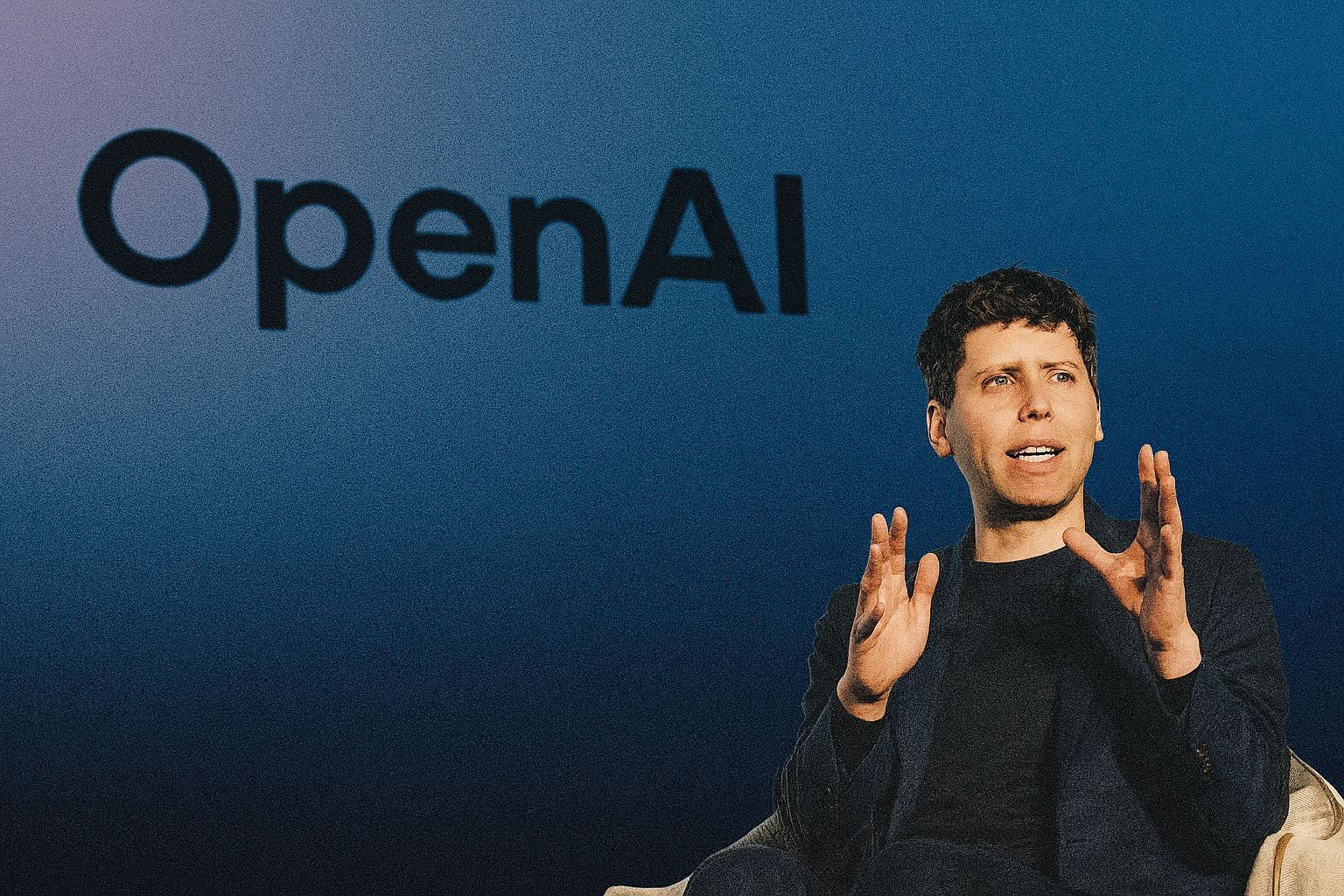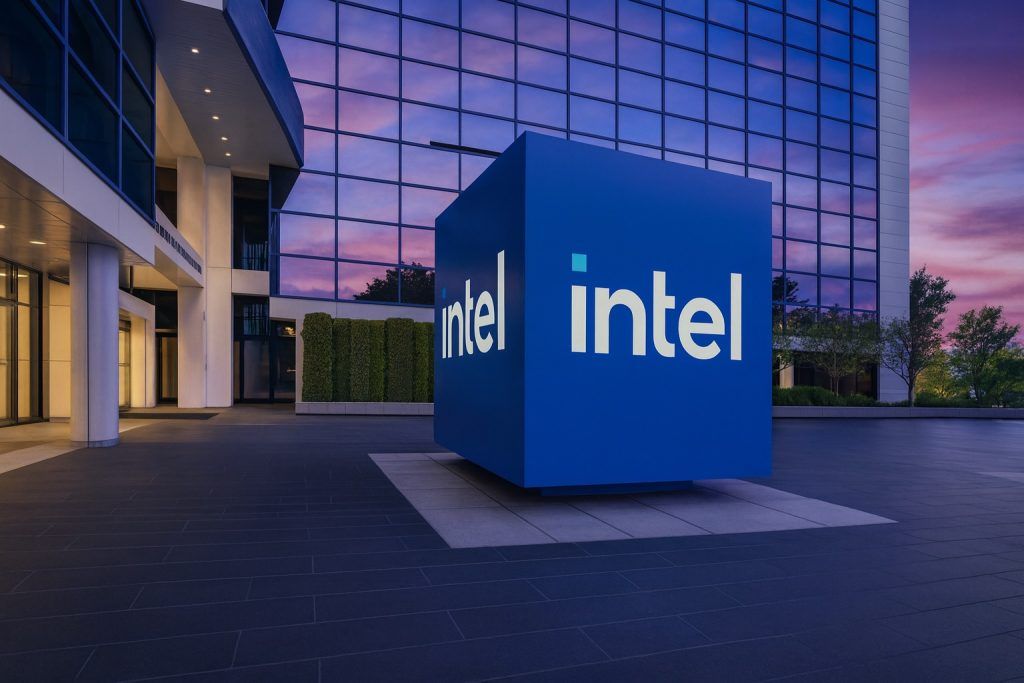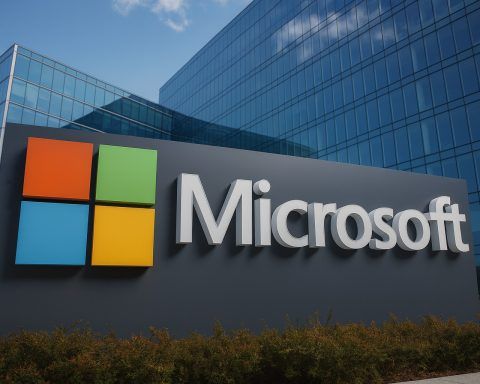On November 22, 2025, OpenAI sits at the center of several big storylines: a strategic hardware tie‑up with Foxconn, a new airline partnership with Emirates, a leaked memo from CEO Sam Altman about Google’s AI lead, the global rollout of ChatGPT group chats, and intensifying scrutiny around safety and regulation.
Here’s a detailed roundup of everything you need to know today about OpenAI and ChatGPT.
Key takeaways
- OpenAI and Foxconn are moving ahead with a US‑focused hardware alliance, with Foxconn eyeing Ohio as a key manufacturing base for AI data‑center components. [1]
- Emirates Group has confirmed a collaboration with OpenAI to roll out ChatGPT‑powered tools and AI training across the airline’s global operations. [2]
- A leaked internal memo shows Sam Altman acknowledging that Google’s Gemini 3 has a temporary lead in the AI race, while urging staff to stay focused on building “superintelligence.” [3]
- ChatGPT group chats are now rolling out globally to all logged‑in users on Free, Go, Plus and Pro plans, turning ChatGPT from a solo assistant into a shared collaboration space. [4]
- Banks and regulators are circling: Morgan Stanley’s deepening relationship with OpenAI underscores the money at stake, while lawmakers and regulators debate safeguards for AI and its impact on mental health. [5]
1. OpenAI and Foxconn: AI hardware moves toward Ohio
The biggest strategic story around OpenAI today is the evolving hardware partnership with Hon Hai Technology Group (Foxconn).
OpenAI’s own blog, published earlier this week, confirmed a collaboration with Foxconn focused on “design work and U.S. manufacturing readiness for the next generation of AI infrastructure hardware.” The companies plan to co‑design several generations of AI data‑center racks, with Foxconn building key components—cabling, networking, cooling and power systems—at its US facilities. [6]
A follow‑up report from Taiwan today adds color: Foxconn chairman Young Liu said the company expects to start research and development in San Jose, California, before moving into production in Ohio, where the firm already operates a large manufacturing compound. The initial deal doesn’t lock either side into purchase commitments, but OpenAI will get early access to evaluate the hardware and an option to buy. [7]
Why this matters
- Domestic AI infrastructure: The partnership is framed explicitly as part of a push to “reindustrialize America,” reducing reliance on overseas manufacturing and shoring up domestic AI supply chains. Sam Altman has called AI infrastructure a “generational opportunity” for US industry. [8]
- Scale and speed: Co‑designing “multiple generations” of data‑center racks in parallel aligns with OpenAI’s need to deploy ever larger models like GPT‑5.1 and beyond, while keeping capacity ahead of rivals. [9]
- Ecosystem signaling: Foxconn, already the world’s largest maker of AI servers, is betting that OpenAI will remain one of the highest‑volume consumers of advanced compute, while OpenAI gains leverage in hardware design and supply.
Practically, users won’t notice anything tomorrow—but over the next few years, this deal is about securing the physical backbone that keeps ChatGPT and future models online and responsive.
2. Emirates partners with OpenAI to modernise global airline operations
In aviation, Emirates Group officially confirmed a new collaboration with OpenAI aimed at embedding AI across the airline’s entire operation.
Coverage from IT Brief UK describes the deal as a broad initiative that includes: [10]
- Deploying ChatGPT Enterprise across the Emirates Group
- Launching AI literacy programmes to train staff
- Creating an internal “AI Centre of Excellence”
- Running joint executive and technical sessions with OpenAI to identify concrete use cases
Emirates‑focused travel media highlight passenger‑facing possibilities: AI‑assisted customer service, better schedule and crew optimisation, smarter disruption handling, and more tailored digital experiences for frequent flyers. [11]
Why this matters
- Flagship reference customer: Emirates is one of the world’s best‑known international airlines. Making ChatGPT Enterprise a core part of its operations gives OpenAI a high‑profile case study in travel and transport. [12]
- End‑to‑end AI adoption: This isn’t just about chatbots at the call centre. The partnership spans operations, customer experience and workforce training, which is exactly the kind of deep integration OpenAI wants Enterprise customers to pursue.
- Sector signal: Airlines are complex, regulated, systems‑heavy businesses. If OpenAI can prove value here, it strengthens its pitch in other high‑stakes industries like logistics, energy, and healthcare.
For everyday travellers, the impact may show up as more responsive support, smarter rebooking during disruptions, and more personalised digital interactions—though much will depend on execution.
3. Sam Altman’s leaked memo: Google is ahead—for now
The most talked‑about narrative today is a leaked internal memo from Sam Altman, reported by multiple outlets, in which he candidly admits that Google currently has the edge in the AI race, thanks to its new Gemini 3 model. [13]
According to India Today and other coverage:
- Altman tells employees that Google’s latest Gemini release could create “temporary economic headwinds” for OpenAI, especially as developer enthusiasm shifts toward rival tools. [14]
- He stresses that OpenAI is “catching up fast” and that the company shouldn’t be distracted by short‑term leaderboard chatter.
- The memo urges staff to keep their attention on the long‑term goal of superintelligence—positioning OpenAI not just as a model vendor, but as the first company to build genuinely superhuman general AI. [15]
The articles also sketch the financial backdrop: OpenAI is reportedly on track for around $13 billion in annual revenue, while investing tens of billions of dollars into compute and research. Google, meanwhile, enjoys far larger free cash flow and even earns money by renting cloud infrastructure to OpenAI itself. [16]
Why this matters
- Rare public humility: Altman’s willingness to concede a temporary lead to Google is notable; OpenAI has usually been framed as the front‑runner.
- Staff morale and investor expectations: The memo doubles as a pep talk—acknowledging plateauing ChatGPT engagement while insisting the company is structurally strong enough to weather stronger competition. [17]
- Strategic pivot: By reiterating that most of OpenAI’s research team needs to focus on superintelligence, Altman is signaling that the next big win won’t just be a slightly better chatbot, but a fundamentally more capable system.
For users and developers, the immediate experience won’t change—but the memo underlines how fiercely competitive the model quality and infrastructure arms race has become.
4. ChatGPT group chats go global
On the product side, ChatGPT’s new group chat feature is moving from pilot to global rollout, and today’s coverage is full of guides and early impressions.
OpenAI’s own announcement describes group chats as a way to bring up to 20 people and ChatGPT into the same conversation, with the assistant powered by GPT‑5.1 Auto in these multi‑user rooms. Group chats are separate from your private conversations, and ChatGPT doesn’t write or use memory from them. [18]
TechCrunch and MacRumors confirm that group chats are now available globally across Free, Go, Plus and Pro plans, on both web and mobile. [19]
A Times of India how‑to published today walks through the basics: [20]
- Tap the “people” icon in the top‑right of a chat to start a group
- Create a short profile (name, username, photo) the first time you join
- Share an invite link—anyone in the group can pass it on
- ChatGPT will decide when to chime in, or you can tag “ChatGPT” to force a reply
Why this matters
- From tool to social space: Group chats push ChatGPT from a one‑on‑one assistant toward a lightweight collaboration platform—for trip planning, study sessions, brainstorming, or even family logistics. [21]
- New usage patterns: Rate limits apply only when ChatGPT responds, so groups can talk among themselves without burning through anyone’s quota, and then call the model in selectively. [22]
- Safety nuances: Group chats inherit OpenAI’s teen safeguards—under‑18 users get stricter content filters by default, and parents can disable group chats entirely via parental controls. [23]
For teams, classrooms and friend groups already using ChatGPT heavily, this feature is likely to reshape how they collaborate around the model.
5. Education: Greece pilots ChatGPT‑based tools for teachers
In education, today’s reporting highlights Greece as an early European testbed for OpenAI’s classroom ambitions.
A Guardian report describes an agreement between OpenAI and Greece’s education ministry that will see teachers in selected schools trained on a special version of ChatGPT built for education, with plans to expand if the pilot goes well. The initiative aligns with OpenAI’s wider rollout of ChatGPT tools tailored for educators, including a free version aimed specifically at teachers. [24]
Why this matters
- Structured experimentation: Rather than a shadow‑IT adoption where students quietly use chatbots on their own, this programme is meant to train teachers first, then introduce AI into lessons more deliberately. [25]
- Policy template: If successful, Greece’s approach—formal agreements, teacher training, oversight—could become a model for other education ministries that want the benefits of AI without losing control over curriculum and assessment.
- Balancing hype and concern: The pilot is launching against a backdrop of worries about plagiarism, screen time and the impact of AI on critical thinking, so results will be closely watched across Europe.
For OpenAI, this is an important test of whether “ChatGPT for education” can work at national scale, not just in individual classrooms.
6. Money and markets: Morgan Stanley’s deepening OpenAI ties
On the finance side, a Bloomberg‑sourced piece republished on Moneycontrol today traces how Morgan Stanley has quietly become one of OpenAI’s most important banking partners. [26]
Key details from the report:
- Morgan Stanley became one of OpenAI’s earliest enterprise clients in 2022, even before ChatGPT launched publicly, deploying OpenAI models to help financial advisers search and summarise research.
- The bank now handles OpenAI’s employee share plans and helped execute a tender offer this year that allowed staff to sell shares at a $500 billion valuation—a deal run on Morgan Stanley’s platform.
- Morgan Stanley also manages the wealth of key OpenAI executives, and uses its “innovation team” to scout startups like OpenAI early, locking in relationships that later turn into lucrative banking mandates. [27]
Why this matters
- Validation for AI as a banking vertical: Banks increasingly see AI giants as long‑term, fee‑rich clients—not just customers for cloud or credit facilities.
- OpenAI’s capital intensity: The fact that OpenAI is running employee liquidity events at such a high valuation underscores both investor confidence and the enormous capital needs behind frontier‑model development. [28]
- Strategic entanglement: As AI companies rely more on sophisticated financial engineering to fund infrastructure deals (like Foxconn and Broadcom partnerships), big banks that understand the space early can lock in years of business.
For OpenAI staff and founders, this also shows how tightly Wall Street is now woven into the company’s future.
7. Safety, mental health and regulation: sharper questions for OpenAI
Not all of today’s OpenAI‑related coverage is celebratory. Two parallel storylines highlight the risks and regulatory debates around generative AI.
7.1 Mental health concerns and teen safety
A column in the Minnesota Star Tribune uses a wrongful‑death lawsuit filed by the parents of a young man in Texas as a stark warning about AI chatbots being used as emotional companions. The family alleges that conversations with ChatGPT may have contributed to their son’s suicide, and the piece calls for stronger oversight, better safeguards, and new federal rules for “AI companions,” especially for minors. [29]
The column notes that teens are heavy users of AI chatbots and argues that tech companies have historically moved faster than regulators, leaving families to cope with the fallout. [30]
OpenAI, for its part, has been rolling out a Teen Safety Blueprint and parental controls: the blueprint outlines age‑appropriate design principles, stronger safeguards for young users, and work on age‑prediction systems so teen accounts can be treated differently by default. [31]
If you or someone you know is struggling with thoughts of self‑harm, it’s important to seek help from qualified people rather than relying on any AI system. In many countries you can reach a crisis line (such as 988 in the US), local emergency services, or a trusted medical professional for immediate support.
7.2 Policy and lawsuits
On the policy front, Reuters reports that the White House has paused a draft executive order that would have tried to preempt state‑level AI laws by empowering federal agencies to challenge them in court and withhold certain broadband funds. The report notes that major industry players, including OpenAI, have previously pushed for a strong federal framework to replace a patchwork of state regulations. [32]
At the same time, OpenAI is still fighting in court over how much ChatGPT user data it can be forced to disclose. In the New York Times copyright case, the company has asked a federal judge to reverse an order requiring it to turn over millions of anonymised chat logs, arguing that this would risk exposing sensitive user conversations—even with de‑identification. [33]
Together, these stories show:
- Regulators and courts are still figuring out how to govern powerful AI models.
- OpenAI is trying to balance legal obligations, user privacy and competitive secrecy in high‑profile litigation.
- The company’s own safety initiatives (like the Teen Safety Blueprint and strengthened “sensitive topic” policies) are increasingly being judged against real‑world harm cases, not just internal promises. [34]
8. What all of today’s OpenAI news means for you
Put together, the November 22 news cycle paints a picture of OpenAI as a company:
- Scaling its infrastructure and partnerships (Foxconn, Emirates, Broadcom, Target, Intuit) to stay ahead in both capability and distribution. [35]
- Facing real competitive pressure from Google’s Gemini 3, Anthropic’s Claude and others—pressure serious enough that the CEO is explicitly preparing employees for “economic headwinds.” [36]
- Turning ChatGPT into a richer platform, with group chats, new models (GPT‑5.1), more inline images, and integrated commerce features rolling out at a rapid clip. [37]
- Operating under a growing cloud of scrutiny, from mental‑health concerns to copyright lawsuits and national debates over AI regulation.
For everyday users, the most tangible changes you’ll notice soon are:
- Group chats appearing in your ChatGPT sidebar, letting you bring friends or colleagues into a shared conversation with the model. [38]
- More images automatically appearing alongside answers when you ask about well‑known people, places or products, thanks to yesterday’s ChatGPT update. [39]
Behind the scenes, though, today’s stories make one thing clear: the battle for AI leadership is shifting from just “Who has the best model?” to “Who can secure the hardware, capital, partnerships and trust to keep pushing the frontier?”
OpenAI is betting big that it can do all four at once.
References
1. openai.com, 2. itbrief.co.uk, 3. www.indiatoday.in, 4. openai.com, 5. www.moneycontrol.com, 6. openai.com, 7. focustaiwan.tw, 8. openai.com, 9. help.openai.com, 10. itbrief.co.uk, 11. www.travelandtourworld.com, 12. itbrief.co.uk, 13. www.indiatoday.in, 14. www.indiatoday.in, 15. www.indiatoday.in, 16. www.indiatoday.in, 17. www.indiatoday.in, 18. openai.com, 19. techcrunch.com, 20. timesofindia.indiatimes.com, 21. openai.com, 22. openai.com, 23. openai.com, 24. www.theguardian.com, 25. www.theguardian.com, 26. www.moneycontrol.com, 27. www.moneycontrol.com, 28. www.moneycontrol.com, 29. www.startribune.com, 30. www.startribune.com, 31. openai.com, 32. www.reuters.com, 33. www.reuters.com, 34. openai.com, 35. openai.com, 36. www.indiatoday.in, 37. help.openai.com, 38. openai.com, 39. help.openai.com










